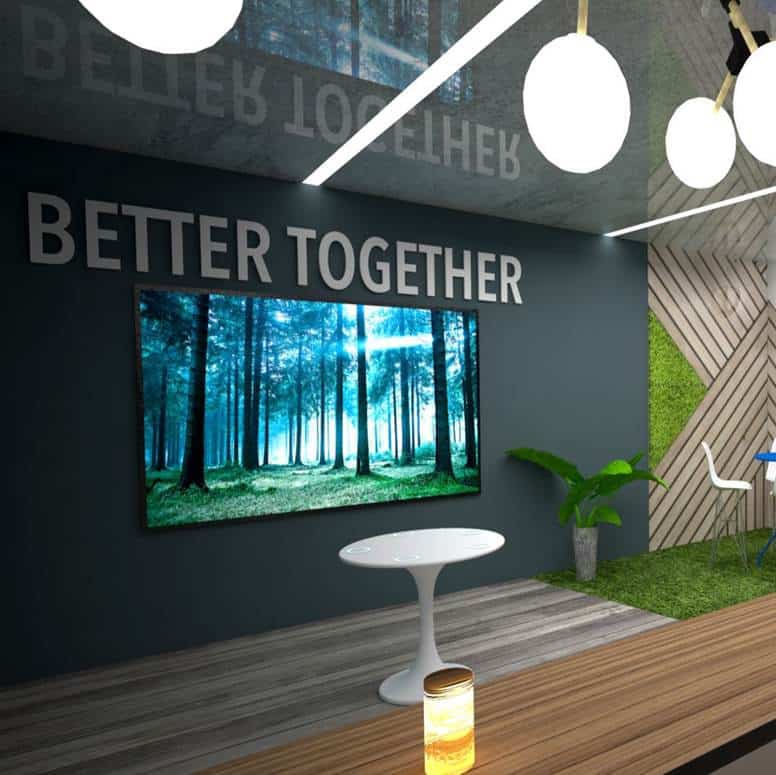Event managers are all too familiar with the challenge of justifying the value of trade show participation to company executives, some of which who have sticker shock over the cost. Getting the budget required to attract the attention a brand deserves can be challenging, since much of the expense is incurred before a show opens while the dollars gained may not be accounted for months or even years ahead.
Over the past decade, event managers who have earned a “seat at the table” have done so by evolving their custom trade show exhibits and programs to offer the best engagement experience for customers and prospects, as well as learning how to measure and demonstrate the value received from the investment.
While nothing can quite replace the value of face-to-face meetings, COVID-19 halted all close human interaction and economies around the globe went into a tail-spin. The shock has now turned to the reality of a new operating environment. At least for the foreseeable future, businesses are having to replace face-to-face connectivity found on the trade show floor, and virtual has become the name of the game.
Virtual in the event world of conferences and exhibitions has emerged in a number of different formats. The educational component of these gatherings can still take place through group meetings, webinars and live streaming, with minimum loss of effectiveness.
The exhibition component is a different matter. Bringing the trade show floor to virtual attendees is more complicated. Some show organizers have created a virtual floor plan that accommodates a standard virtual trade show rental booth a company can customize with a limited amount of branding, graphics and information links. While this option allows the show to take place and provides access to a target audience, the platform is typically only available during run-of-show and oftentimes the similarity of exhibits makes differentiation from competitors a challenge.
Other events are allowing exhibitors to create unique virtual experiences that can be accessed from the show’s web site or portal. This approach is an opportunity to demonstrate great design that highlights a brand and provides an immersive experience that can tie to the show organizer platform to differentiate a brand.
The virtual environment can be designed to showcase a current booth and align in-person presentations using videos. For companies with budgets that only allow for smaller exhibits in the physical world, the virtual environment could be designed on a bigger scale and without standard show regulations. The opportunity for more product information and demonstrations greatly expands when a 10’x20’ exhibit becomes 50’x50’ in the virtual world.
Once inside a virtual booth, attendees use their mouse to navigate through the exhibit by zooming into areas that provide information through product-specific videos or recorded feature demonstrations. Virtual attendees who could not visit during official show hours can still partake in the experience at their leisure. Those who already have visited can share the link with colleagues or experience specific areas of interest again.
Complementary Marketing Efforts
Virtual experiences can also be developed to complement other marketing efforts.
- With a virtual experience, links to online resources, case studies and thought leadership articles can be easily accessed.
- Virtual experience registration and tracking can increase the company’s marketing database, expanding reach by adding new contacts for marketing automation and sales teams.
- Analytics can provide insight into attendees’ focus in a booth, allowing for adjustments that maximize engagement and increase conversions.
- Touching past attendees is possible by distributing the experience through email campaigns and outreach by account executives.
- Additional exposure is easy as the experience can be promoted through social media and email marketing, as well as organic search reach (SEO) and paid site promotions.
Measuring the Value
As with the measurement of value in the physical world, a company must first determine how much a customer is worth and project how many people must attend the show to get the proper sales conversion in order to cover the investment. Additional information is easy to gather with in-booth and exit survey technology embedded in your virtual site. The basic metrics for trade shows still apply to the virtual world, with the understanding that an exhibitor can gain more measures through online tracking methods and must comply with stricter privacy (GDPR) regulations.
According to organizers of a number of virtual events, they have experienced an increase in attendee levels given that folks do not have to travel to take part in an event. They can simply view the areas of interest as their schedule permits.
As we return to the trade show floor, it is likely that there will be a virtual element to future trade shows. Event managers who have capitalized on what virtual has to offer during this time of quarantine and have measured its value, will understand how to better structure their event programs to include physical and virtual environments going forward. Also, they will have the information needed to support requests for a budget that will meet program goals.
At Exhibitus, we are taking brands to the virtual world and measuring the results. Contact us and let us help you evolve your program for the next iteration of face-to-face marketing.

